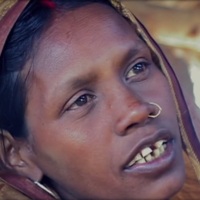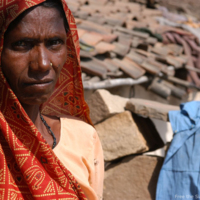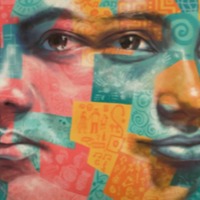
Anyone of you sitting here at this very moment can go to Haiti and ask for a child to live with you. All you need to do is to find a family with too many mouths to feed and promise that you will send the child to school and she is yours. You can treat her the same way slaves were treated under the French colonists. You do not have to make her a part of the family, learn her name, send her to school, provide her with health care, buy her clothes, give her affection, or treat her like a human being. You can make her sleep outside, torture her to death and dump her body in the trash, and no one will question you, and there will be no government investigation to find out the cause of death. In fact, the same specialized whips that were manufactured to torture the slaves during the 1700s can be purchased today on the streets of Port-au-Prince to torture children in domestic servitude. This practice is a violation of Haiti’s Constitution, the Convention on the Rights of the Child, which passed the UN General Assembly in 1989, as well as the ILO’s Worst Forms of Child Labour Convention, 1999.
One of the worst forms of abuse facing Haiti’s slave children is exclusion. Slave children in Haiti set tables for meals in which they cannot partake, fetch water that they cannot use for their own needs, are denied medical care when they are struck by illness, are forbidden to speak until spoken to, and stay outside when adults are inside. While these slave children are forced to be invisible, they must remain within the reach of their master’s voice. Otherwise, severe doses of physical punishment will ensue without mercy. This is a reality which provoked nightmares that consumed my own childhood and still haunt me well into my adulthood.
At night, when I was a restavec child in Haiti, the adults installed themselves in the living room and I would go behind the house to watch television through the window screen, standing on a concrete block in the dark while mosquitoes feasted on my exposed legs and arms. I had to be constantly within the reach of the grown ups’ voices in case they wanted to be served a cold beverage from the refrigerator within their reach. I then remained out of sight until everyone was in bed, arranged my bedding under the kitchen table and woke before everyone would get out of bed.
Today, in the year 2002, on any early morning in Port-au-Prince, children in tattered clothes are seen hand in hand with children in bright uniforms crossing the street. The ones in tattered clothes are restavecs who must return to their duties as domestic slaves after escorting their counterparts to school.
This daily exclusion from any community or family often leaves no visible scars but the trauma lasts a lifetime. These children all too frequently become victims of the abusive and institutionalized practice of domestic servitude. Since their most basic rights—to a family’s love and protection, health and education—are denied, restavecs are invisible children, observers instead of participants in their own society.
As a slave child in Port-au-Prince, my day began at 5.30 in the morning and ended when the last adult went to sleep. I had to sweep the yard, water the plants, fill the tub for everyone’s bath, empty and wash the chamber pots, hand wash diapers, boil baby bottles, wash the car twice a day, dust the furniture every day, serve people drinks in the front yard every evening, wash people’s feet every evening, run errands, hand wash women’s monthly napkins, fetch water from afar, be borrowed by the family’s friends, and cook my own food. I worked seven days a week with no pay and no time to play. I was also excluded from all family activities such as meals, birthdays, attending school and church, Mother’s Day, Christmas, New Year’s celebrations, weddings, first communions, and even funerals. I could not speak unless spoken to. For any minor infraction, such as not answering quickly enough when my name was called, I was beaten without mercy. Like all restavec children, I was only an observer rather than a participant in my Haitian society and culture.
It was by a twist of fate that I came to the United States. In 1970, the family that owned me moved to the United States and later sent for me to resume the same duties that I used to perform in Haiti. My birth certificate was purchased on the black market, and I was listed as my virtual owner’s son only to fool the United States Immigration officials.
In New York, my situation improved a great deal. My owners made sure that I wore shoes and clean clothes to hide the fact that they had a slave child living with them. However, by having to address everyone as Monsieur, Madame, Mademoiselle, they made sure that I did not forget my status as a restavec. I no longer had to wash their feet, fetch water or hand-wash feminine napkins every month. But I continued my duties of washing dishes, cleaning the house, setting the table, babysitting three children and washing the car.
One day, a family friend who knew me in Haiti came to visit and told the family that it was against the law in the United States not to send a minor to school. I was taken to Spring Valley High School in New York and placed in the ninth grade. I was about 16 years old and I had the equivalent of a third grade education, with no English proficiency.
When the family realized that their children and I would be attending the same school, I was shown the door to fend for myself. However, the facts that I was attending school, participating in extra-curricular activities and eating in the cafeteria with my fellow students made me an integral part of American society. For the first time in my life, I could express my needs, feelings, and opinions.
After four years in high school, I graduated and joined the United States Army for three years. I then completed my university studies and eventually wrote my autobiography Restavec, simply to raise international consciousness to the plight of Haiti’s more than 300,000 slave children.
By looking at me, you cannot tell that I never had a childhood. It was stolen and the accomplice is Haiti’s institutionalized practice of domestic servitude. Since it can never be recovered, I will feel its absence for the rest of my life. To give you an idea, what it is like to have never had a childhood, let me read parts of the foreword to my book that my wife Cindy wrote:
My days and nights reverberate with the truth of this story that my husband has written. I was not there to witness the circumstances of his birth, the horrors of his childhood or his surreal assimilation into American society that form the basis of his memoirs, but I lie beside him now each night as he sleeps. And when that sleep is fitful—when I hear his labouring breath, his muffled cry, or feel his arms tremble and his legs thrash about—I know that reality from decades ago is up on us again.
Four months ago, while I was in Haiti to distribute clothes to street children who once were slaves, a Haitian acquaintance invited me to spend a weekend as a guest in his family’s house. It was a two-story yellow and white brick house in an upper-class suburb in Port-au-Prince, protected by an eight-foot wall and a large red iron gate. I was awakened from a light sleep at around four in the morning by the crowing of roosters. I went to sleep again, and I opened my eyes to daylight when I heard a noise coming from the yard. It was quarter to six. I got out of bed and I looked down from the balcony. It was the sound of Celita’s large broom sweeping the cement yard. Everyone else in the house was still in bed.
Celita was an 11 year old slave girl who had been living with the family for the past two years. Her mother, who lived in the countryside, had handed Celita to the host family because she was no longer able to provide her daughter with what every child needs: three meals a day and a decent school. Celita was dressed in an oversized, sleeveless t-shirt and a skirt. Her small budding breasts were visible from the side each time she leaned forward.
She cleaned up after the dog, washed the yard with buckets of water and dried it with a rubber squeegee. Then she repeatedly carried water from a bucket upstairs to flush toilets and to fill-up bathtubs. After each of the four adults and one child bathed, she set the table and made a trip to the bakery, while the cook prepared breakfast. As everyone ate, Celita stood near the doorway with her hands behind her back, waiting for requests to pass the butter, the sugar, the salt, or whatever someone did not care to reach for. After breakfast, Celita cleared the table and ate the leftover food sitting on a cement block near the gate. Then she washed dishes and went upstairs to make the beds, dust the furniture and mop the rooms. While doing these tasks, she was interrupted with several requests, “Celita fetch my slippers, Celita bring me a comb, Celita bring my purse.” Besides being the doer and the fetcher of everything for everyone, Celita also cared for the family’s bright eyed nine-year old daughter Maida, whose face looked healthy and was always ready to smile. She was often praised and affectionately touched by her mother, father and grandfather, who spoke to her only in French. A large picture of her first communion in a gold frame graced the small coffee table in the living room. Maida was Catholic, she had toys, and attended an expensive private school.
Celita was a dark skinned child with a thin, scarred and hardened face that did not seem able to smile. Her eyes were deep and dull. She was often criticized and threatened with the back of a hand. She had no picture of herself in the house. She did not go to school and her owners never took her to any church. She had no religion. She entertained Maida instead of playing with her. She obeyed Maida’s every command.
As her owner begun to back his brown car out of the driveway, he honked his horn and Celita ran at full speed to open the heavy iron gate that kept the house and everyone inside safe from intruders. As soon as Celita finished her other house-cleaning duties, she sat on a cement block and began to wash by hand a huge pile of clothes. And again, she was constantly interrupted, “Where is Celita, come wash this pot, Celita come dry the floor, Celita come flush the toilet, Celita come set the table.” By late afternoon, the brown car returned again and the horn was honked again. Celita rushed to the front yard and pulled opened the heavy iron gate. The car entered, and she pushed the gate shut.
By late evening, the family sat on the front porch relaxing in the warm tropical breeze. Celita carried a bucket of water to the side of the house where the dog was tied. She bathed there, changed to an oversize dress and remained out of sight but within the reach of everyone’s voice. Soon the requests began again until everyone went to bed. “Celita bring me a glass of water, Celita fetch my slippers.” Celita’s sole purpose was to slave. Her right to be a child ended the very moment she walked through the red iron gate. Her masters’ comfort was her hell.
Haiti’s institutionalized practice of using children as domestic slaves violates every article of the Convention on the Rights of the Child, which passed the UN General Assembly unanimously, along with Haiti’s ratification in 1989. Haiti is now making preparations to celebrate its 200th year of independence in 2004. Leaders of many nations will be invited to attend the ceremony, and every Haitian will take to the streets to celebrate, except the children forced into domestic slavery.
Narrative as told to the International Institute for Labour Studies, November 2002, in Geneva, Switzerland.








